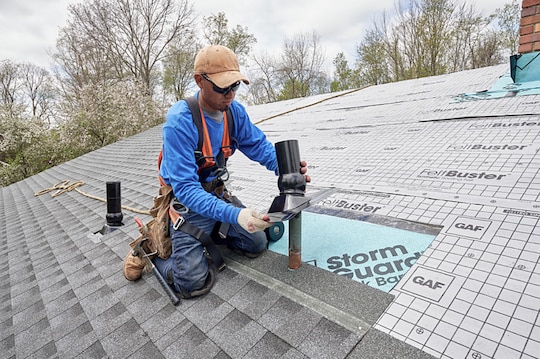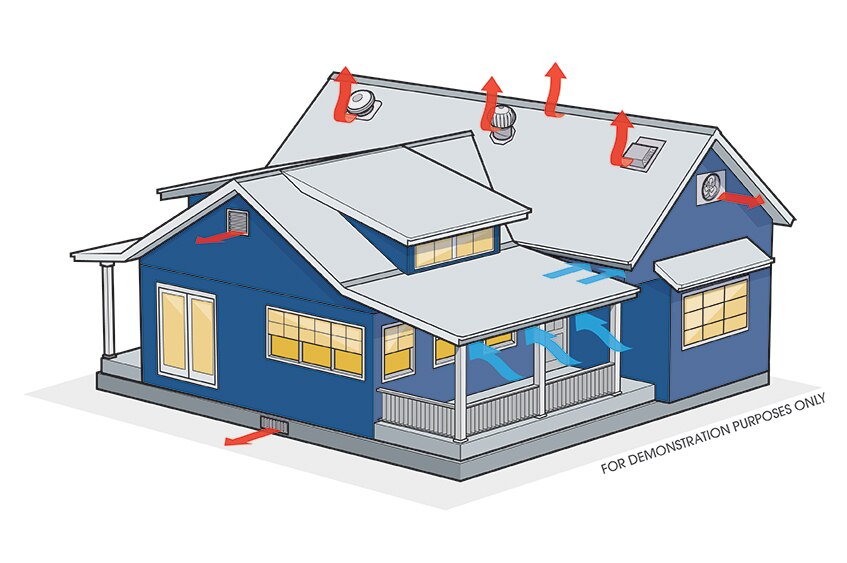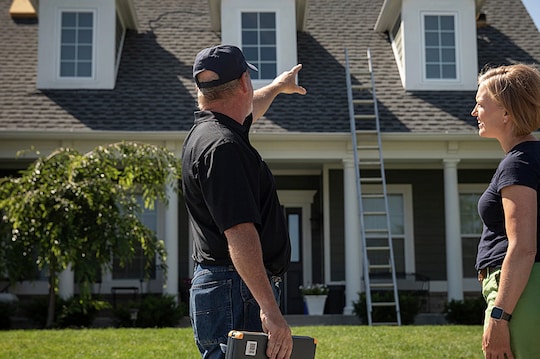
Residential Roofing
Using Pipe Boot Flashing for a Roof Leak Repair
Plumbing vent pipe penetrations are vulnerable points on a home's roof. They're often a common source for roof leaks. So when a customer calls you with a problem involving a pipe on their roof, you'll want to present them with an effective and long-lasting solution.Installing quality pipe boot flashing can help stop leaks and protect against future water intrusions. Here are the key details to know when using pipe boot flashing for a roof leak repair.Why Quality Flashing MattersWhen installing flashing to any part of a roof, the material you use can make the difference between a leak forming a year later or after several decades. Using premium flashing products—like the GAF Master Flow™ Pivot™ Pipe Boot Flashing—can give you and your customers valuable peace of mind.GAF Pivot Pipe Boot Flashing stands out for a few reasons; it provides top-notch performance and visual appeal. The exterior design completely covers the pipes without exposed seals, collars, or gaskets, providing water-tight protection and excellent leak resistance. The all-metal construction is also aesthetically appealing. It comes in four color options to match the color scheme of the roof's existing shingles.Quality roofing materials can potentially save you time and energy, as you won't be called out to your customer's property to find and repair leaks after every rainstorm. Additionally, knowing you chose the right product and properly installed it can result in satisfied clients who respect your professionalism and recommend your business to others.Benefits of GAF Pipe Boot FlashingGAF Master Flow™ Pivot™ Pipe Boot Flashing offers several other advantages for homeowners and contractors beyond just a roof leak repair.Excellent DurabilityDuring its development, GAF Master Flow™ Pivot™ Pipe Boot Flashing was subjected to rigorous industry testing to ensure it can stand up to the elements and strikes from trees or debris. The product passed several tests, including the 110 mph wind-driven rain resistance test per TAS 100(A), lab-simulated ice dam resistance, and UL 2218 Class 4 impact resistance.Warranty ProtectionUsing products with strong warranties can show clients you use only high-quality materials, improving your credibility and reputation. Customers also gain peace of mind that any defects can be repaired or fully replaced.Once a GAF-certified contractor installs the pipe boot flashing, it's warranted for up to 50 years against leaks or as long as the adjacent roof covering's warranty. GAF Residential Enhanced warranties can provide additional reassurance for roofing contractors and homeowners.How to Use Pipe Boot Flashing for a Roof Leak RepairWhether a customer's plumbing vent pipes weren't installed with flashing or the flashing got damaged, you can often attribute a roof leak to this system component. After confirming this is the case through your roof leak detection process, you can address the issue.If a lower-quality flashing didn't previously work, use premium materials, like the GAF Master Flow™ Pivot™ Pipe Boot Flashing, to quickly fix the roof leak and help prevent similar problems from arising.Though pipe flashing is easy to install, carefully follow the instructions, as improper installation is often a common reason for leakage. Place the product over the protruding pipe, on top of the roof's leak barrier. The ball and socket pitch adjustment feature allows you to match the roof pitch for a perfect fit. Once you fasten it with corrosion-resistant roofing nails, you can shingle over its sides and top.Adding GAF Pipe Boot Flashing to Your ToolboxUsing quality products to complete your jobs can help you feel confident about your workmanship, and your customers can rest easy knowing their home is protected. GAF carries many premium roofing products to ensure roofing work is done right.Learn more about this cutting-edge GAF product and its simple installation method by exploring the GAF Master Flow™ Pivot™ Pipe Boot Flashing product page.
By Authors Mark Soto
December 13, 2024



